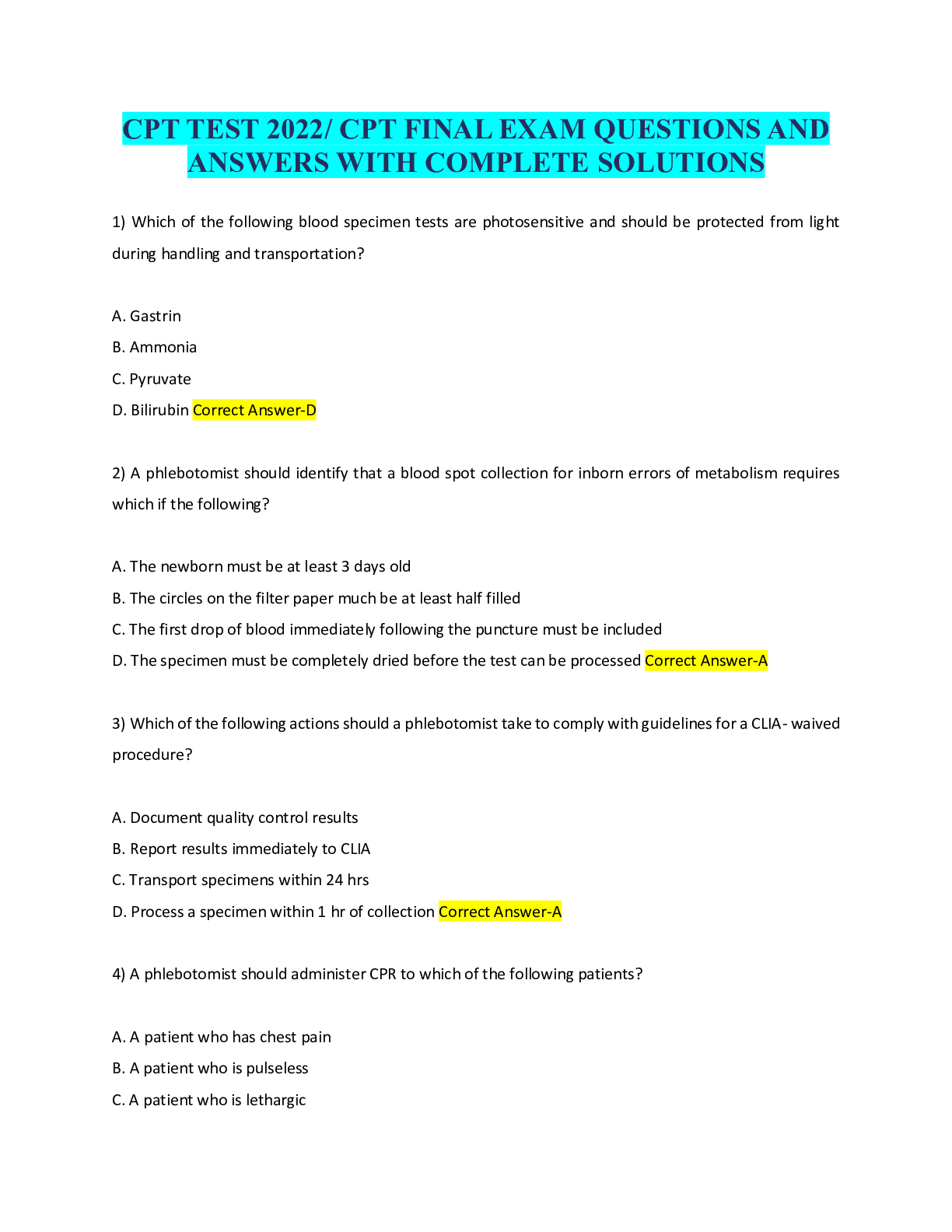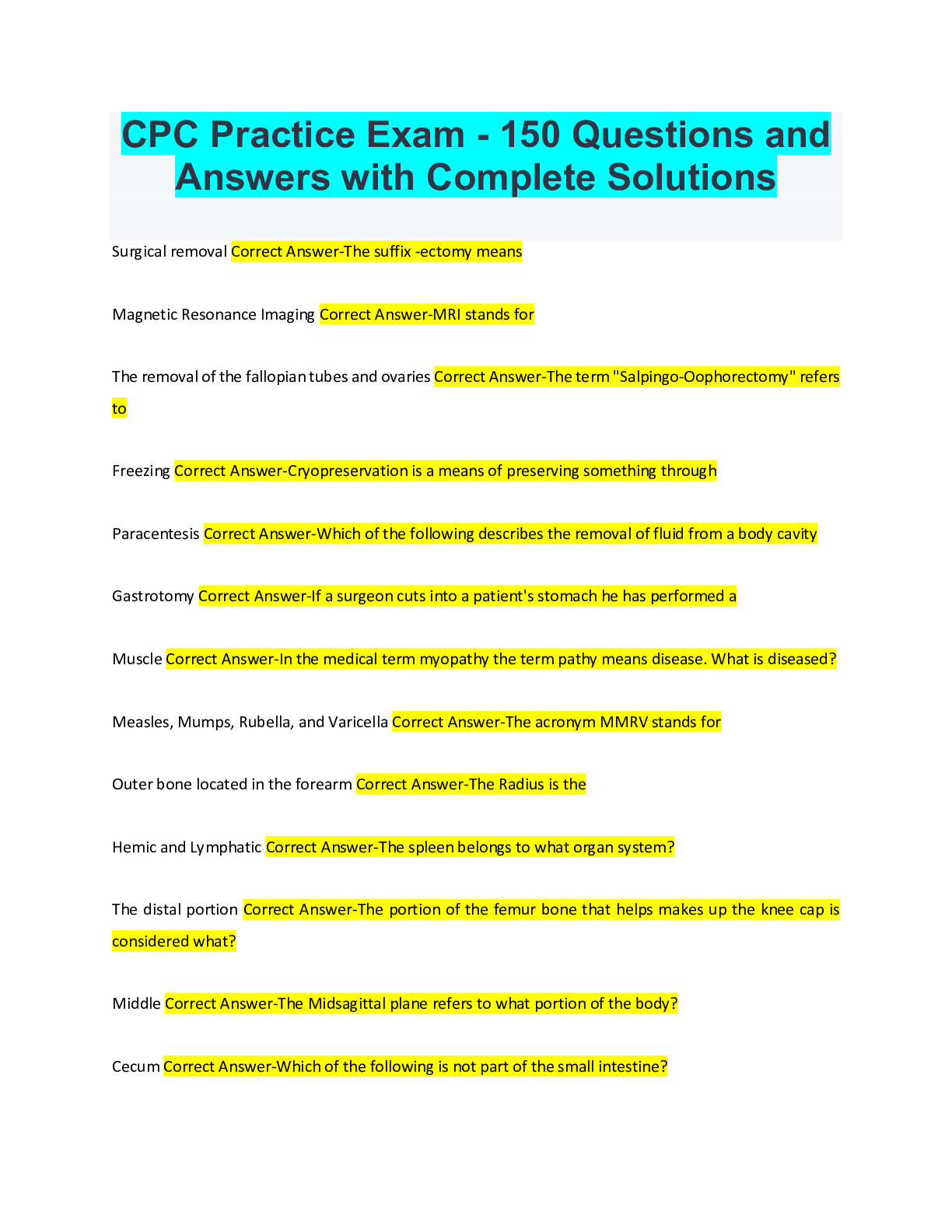Health Care > EXAM > SLP ETS Practice Test 2022/2023 Form 1 QUESTIONS AND ANSWERS WITH COMPLETE SOLUTIONS (All)
SLP ETS Practice Test 2022/2023 Form 1 QUESTIONS AND ANSWERS WITH COMPLETE SOLUTIONS
Document Content and Description Below
SLP ETS Practice Test 2022/2023 Form 1 Which of the following should be the primary focus of early language intervention for at-risk infants? A.Establishing object permanence through play acti... vities B.Training primary caregivers to facilitate language learning C.Creating readiness activities in the context of play D.Enhancing social communication through play activities Correct Answer: Option (B) is correct. Early language stimulation in at-risk infants is best provided by primary caregivers who have been trained in practices that promote learning. The figure above shows the oral, pharyngeal, and esophageal structures involved in swallowing. Which of the following best describes the transit of the bolus at the moment depicted in the figure? A.The bolus is traveling through the esophagus. B.The bolus is being propelled from the oral cavity by the tongue and has entered the pharynx. C.The bolus has passively exited the oral cavity without propulsion by the tongue. D.Laryngeal penetration of some of the bolus is evident. Correct Answer: Option (B) is correct. The tongue is in contact with the entire anterior and most of the mid to posterior hard palate. Furthermore, the bolus head has passed the epiglottis and is descending into the hypopharynx. Primary motor innervation to the larynx and velum is provided by which cranial nerve? A.V B.VII C.IX D. X Correct Answer: Option (D) is correct. Primary innervation to the larynx and velum is provided by cranial nerve X, the vagus nerve. The other answer choices identify cranial nerves that are not primarily involved in motor innervation to the larynx and velum. GOT WRONG Fela is a third-grade student in a public school. She is a speaker of African American Vernacular English (AAVE) who has difficulty with the Standard American English (SAE) dialect used in her classroom. Her teacher believes that Fela's language skills are affecting her academic performance and has referred her to the school's speech-language pathologist. Which of the following is an appropriate rationale for providing language intervention for Fela? Select all that apply. A.It will likely foster better communication with Fela's linguistically and culturally diverse peers. B.It will likely improve Fela's code-switching ability with her teacher and other adult speakers of SAE. C.It may expand Fela's later academic and vocational opportunities. D.It will likely lead Fela to adopt SAE as her primary dialect. Correct Answer: Options (A), (B), and (C) are correct. The intervention will foster better communication because Fela and her peers will have a common dialect. Also, the intervention will provide Fela with the ability to switch easily between dialects using SAE structures. Furthermore, being able to switch codes will enable Fela to participate in more educational and vocational opportunities. Federal laws regarding freedom of access to information stipulate that client records kept or written by health care professionals can be A.reviewed only by other health-care professionals B.reviewed only by the clients themselves unless the client provides written permission to share with others C.reviewed by anyone who submits a formal written request D.released only by subpoena Correct Answer: Option (B) is correct. Clients have the right to review their own records. To justify providing individual treatment for a 2½ year old with apraxia of speech, which of the following would be LEAST important for the SLP to include in the evaluation report? A.A description of the child's typical interaction with peers B.Relevant prognostic data C.Information about apraxia of speech D.A description of the language development of the child's older siblings Correct Answer: Option (D) is correct. A description of the child's older siblings' language development does not provide the objective, documented evidence required to justify provision of treatment for a child of an age at which some unintelligibility would be typical. The speech reception threshold (SRT) is a basic component of an evaluation of hearing function. Which of the following statements about the SRT is most accurate? A.It is measured in decibels and corresponds to the intensity level at which spondaic words can be recognized approximately 50% of the time. B.It makes use of test materials that are limited to monosyllabic words. C.It provides information on how well speech is understood at conversational levels. D.It is useful in validating acoustic intermittence measures. Correct Answer: Option (A) is correct. It is an accurate definition of the speech reception threshold. A clinician who employs active listening is doing which of the following? A.Responding to both the content and the affect of the client's remarks B.Listening very carefully and taking extensive notes C.Conducting a clinician-directed interview D.Directing the client to specific answers to questions Correct Answer: Option (A) is correct. A clinician who employs active listening responds to both the content (the denotative message) and the affect (the emotional content) of a client's remarks. This investigation was motivated by observations that when persons with dysarthria increase loudness, their speech improves. Some studies have indicated that this improvement may be related to an increase of prosodic variation. Studies have reported an increase of fundamental frequency (F0) variation with increased loudness, but there has been no examination of the relation of loudness manipulation to specific prosodic variables that are known to aid a listener in parsing out meaningful information. This study examined the relation of vocal loudness production to selected acoustic variables known to inform listeners of phrase and sentence boundaries: specifically, F0 declination and final-word lengthening. Ten young, healthy women were audio-recorded while they read aloud a paragraph at what each considered normal loudness, twice-normal loudness, and half-normal loudness. Results showed that there was a statistically significant increase of F0 declination, brought about by a higher resetting of F0 at the beginning of a sentence and an increase of final-word lengthening from the half-normal loudness condition to the twice-normal loudness condition. These results suggest that when some persons with dysarthria increase loudness, variables related to prosody may change, which in turn contributes to improvement in communicative effectiveness. However, until this procedure is tested with individuals who have dysarthria, it is uncertain whether a similar effect would be observed. Which of the following represent(s) the independent variable or variables used in the Watson and Hughes study? A.Prosody of dysarthric speech B.F0 declination and final-word lengthening C.Vocal loudness D.Speech intelligibility and communicative effectiveness Correct Answer: Option (C) is correct. The researchers manipulated vocal loudness to determine its effect on prosodic F0 and durational variables. This investigation was motivated by observations that when persons with dysarthria increase loudness, their speech improves. Some studies have indicated that this improvement may be related to an increase of prosodic variation. Studies have reported an increase of fundamental frequency (F0) variation with increased loudness, but there has been no examination of the relation of loudness manipulation to specific prosodic variables that are known to aid a listener in parsing out meaningful information. This study examined the relation of vocal loudness production to selected acoustic variables known to inform listeners of phrase and sentence boundaries: specifically, F0 declination and final-word lengthening. Ten young, healthy women were audio-recorded while they read aloud a paragraph at what each considered normal loudness, twice-normal loudness, and half-normal loudness. Results showed that there was a statistically significant increase of F0 declination, brought about by a higher resetting of F0 at the beginning of a sentence and an increase of final-word lengthening from the half-normal loudness condition to the twice-normal loudness condition. These results suggest that when some persons with dysarthria increase loudness, variables related to prosody may change, which in turn contributes to improvement in communicative effectiveness. However, until this procedure is tested with individuals who have dysarthria, it is uncertain whether a similar effect would be observed. Watson and Hughes are cautious when suggesting that the speech of some persons with dysarthria improves because of the prosodic changes that result from increasing vocal loudness. Of the following, which is the most likely reason for this caution? A.Only women were studied. B.The prosody of persons with dysarthria may not show similar loudness effects. C.Several acoustic variables related to speech prosody were not included. D.Reciting a paragraph aloud is unlike spontaneous speech. Correct Answer: Option (B) is correct. At the end of the abstract, the researchers Hughes suggest a relationship between increased vocal loudness and "improvement in communicative effectiveness" in some persons with dysarthria. This relationship is not directly supported by their study, as individuals with dysarthria were not tested. This investigation was motivated by observations that when persons with dysarthria increase loudness, their speech improves. Some studies have indicated that this improvement may be related to an increase of prosodic variation. Studies have reported an increase of fundamental frequency (F0) variation with increased loudness, but there has been no examination of the relation of loudness manipulation to specific prosodic variables that are known to aid a listener in parsing out meaningful information. This study examined the relation of vocal loudness production to selected acoustic variables known to inform listeners of phrase and sentence boundaries: specifically, F0 declination and final-word lengthening. Ten young, healthy women were audio-recorded while they read aloud a paragraph at what each considered normal loudness, twice-normal loudness, and half-normal loudness. Results showed that there was a statistically significant increase of F0 declination, brought about by a higher resetting of F0 at the beginning of a sentence and an increase of final-word lengthening from the half-normal loudness condition to the twice-normal loudness condition. These results suggest that when some persons with dysarthria increase loudness, variables related to prosody may change, which in turn contributes to improvement in communicative effectiveness. However, until this procedure is tested with individuals who have dysarthria, it is uncertain whether a similar effect would be observed. From: Watson, P.J., & Hughes, D. (2006). The relationship of vocal loudness manipulation to prosodic F0 and durational variables in healthy adults. Journal of Speech, Language, and Hearing Research, 49, 636-644. Which of the following best describes the experimental design of the Watson and Hughes study? A.A multiple-baseline design B.A between-subjects design C.A within-subjects design D.A mixed between- and within-subjects design Correct Answer: Option (C) is correct. The researchers use the same group of subjects who recite a paragraph under three conditions: at normal, twice-normal, and half-normal loudness. This is an example of a within-subjects design, in which the dependent variables (in this case, prosodic F0 and durational variables) are measured repeatedly in the same subjects under different task conditions (in this case, vocal loudness). A 55-year-old woman, recently hospitalized for probable cerebrovascular accident (CVA), is referred for evaluation of stuttering speech. The initial conversation with the client indicates that speech is characterized by frequent initial-phoneme repetitions and prolongations as well as associated mildly effortful eye blinking. Which of the following pieces of information is crucial to accurate speech diagnosis and decisions regarding management of the speech problem? A.The site and extent of the lesion associated with the suspected CVA B.Whether the client has any associated dysphagia or dysphonia C.Whether the dysfluencies began before or after the suspected CVA D.Whether the client feels frustrated by the dysfluencies Correct Answer: Option (C) is correct. Dysfluent speech may or may not be directly caused by the patient's suspected CVA. GOT WRONG Which of the following is the best action to take initially with a client who presents with poor oral control of liquids and solids, coughing and choking while eating and drinking, and a history of hospitalizations associated with pneumonia? A.Thickening liquids so that the client will be better able to control oral movements for swallowing B.Obtaining a modified barium-swallow study to determine appropriate interventions C.Evaluating the client's ability to eat a variety of foods in order to determine which foods are safest D.Prescribing that the client be NPO, since aspiration is present Correct Answer: Option (B) is correct. An assessment of the problem must be undertaken before treatment is provided, and the best way to do this is to obtain a modified barium-swallow study. A number of research reports have described poor auditory memory in children with language impairments. Which of the following can most appropriately be concluded from these studies? A.Poor auditory memory can be improved by language-intervention programs that focus on teaching vocabulary and word meanings. B.Poor auditory memory is a reflection of a language impairment, and clinicians and researchers cannot [Show More]
Last updated: 1 year ago
Preview 1 out of 35 pages
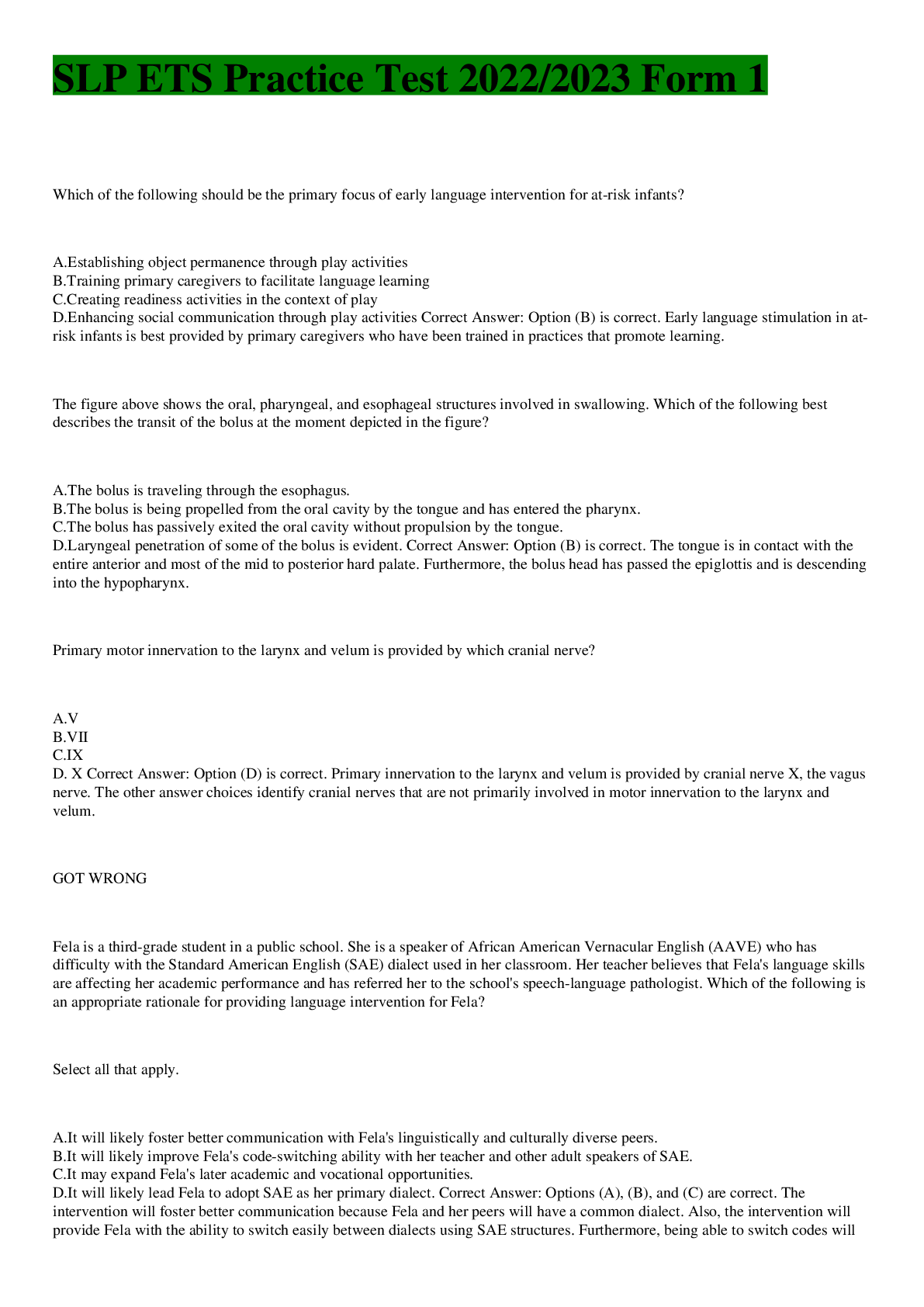
Reviews( 0 )
Document information
Connected school, study & course
About the document
Uploaded On
Jun 28, 2022
Number of pages
35
Written in
Additional information
This document has been written for:
Uploaded
Jun 28, 2022
Downloads
0
Views
37


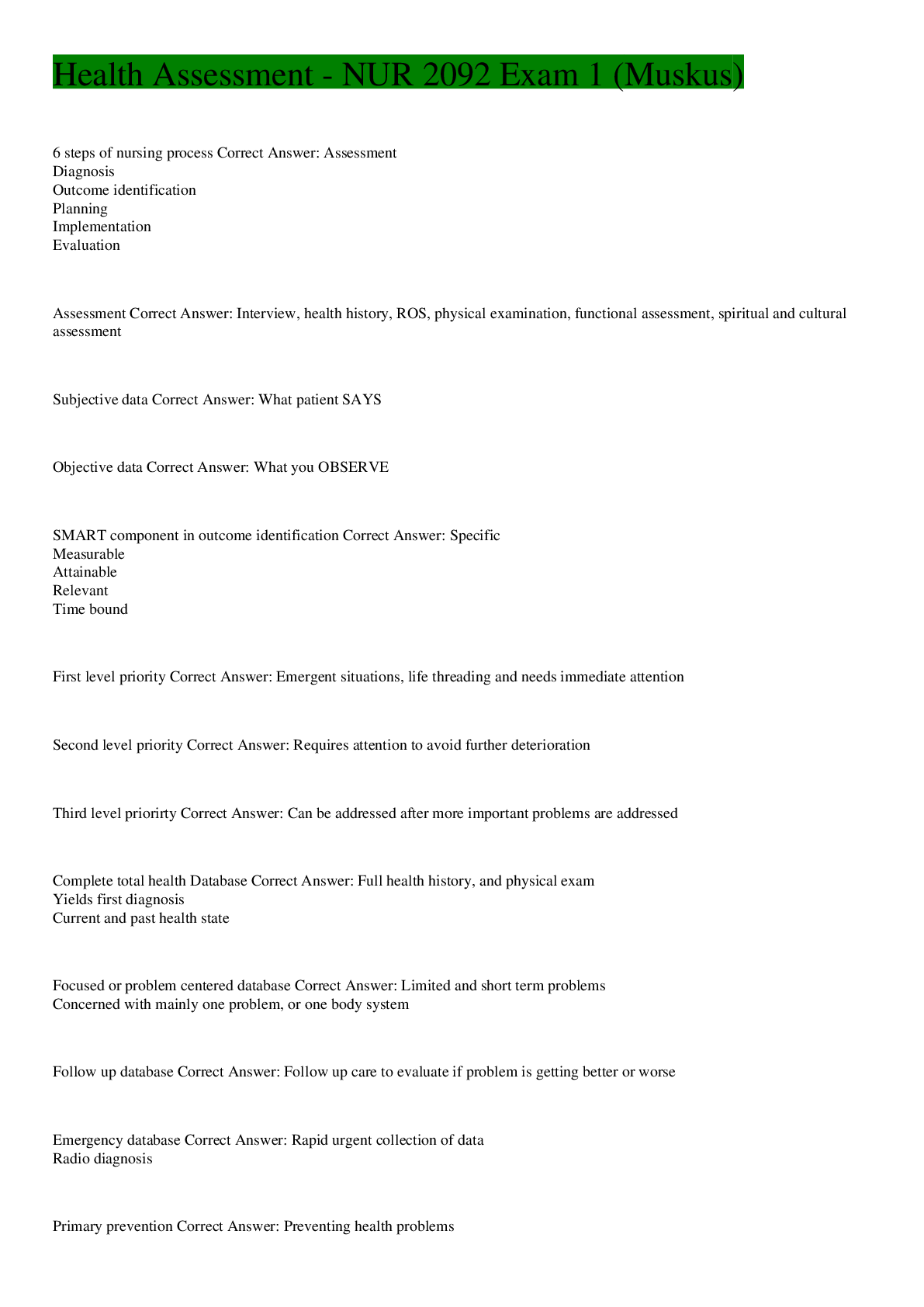
.png)
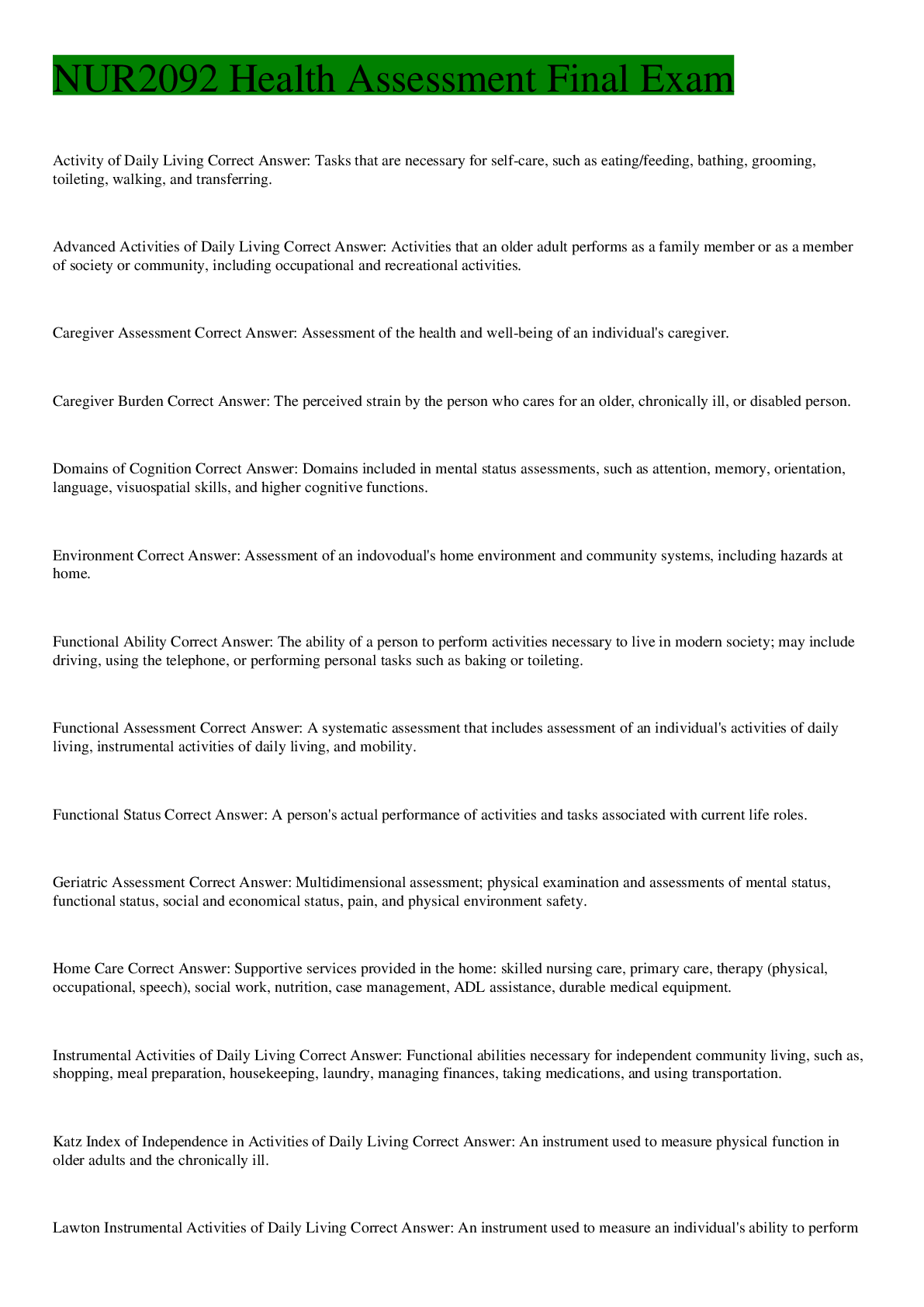
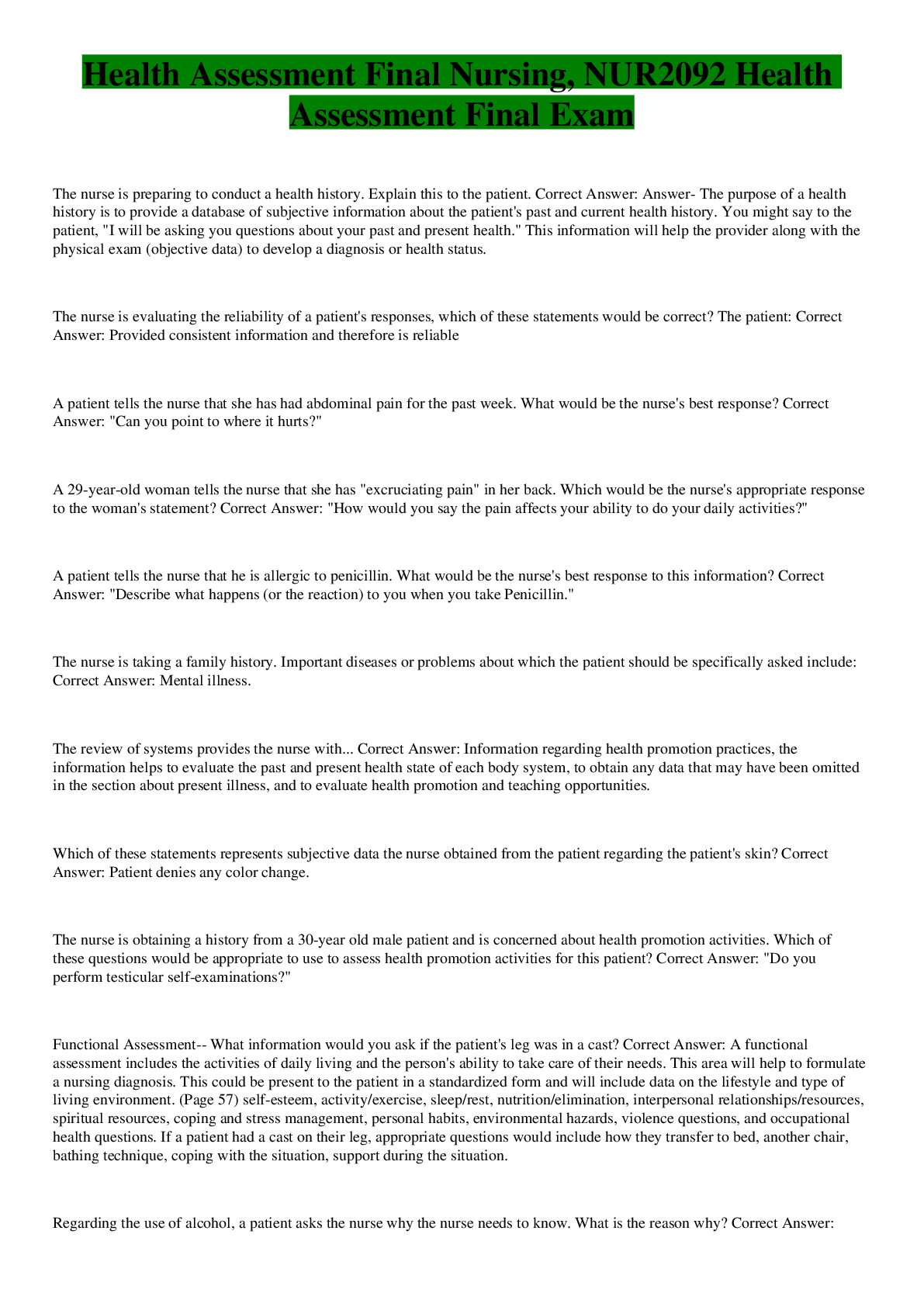
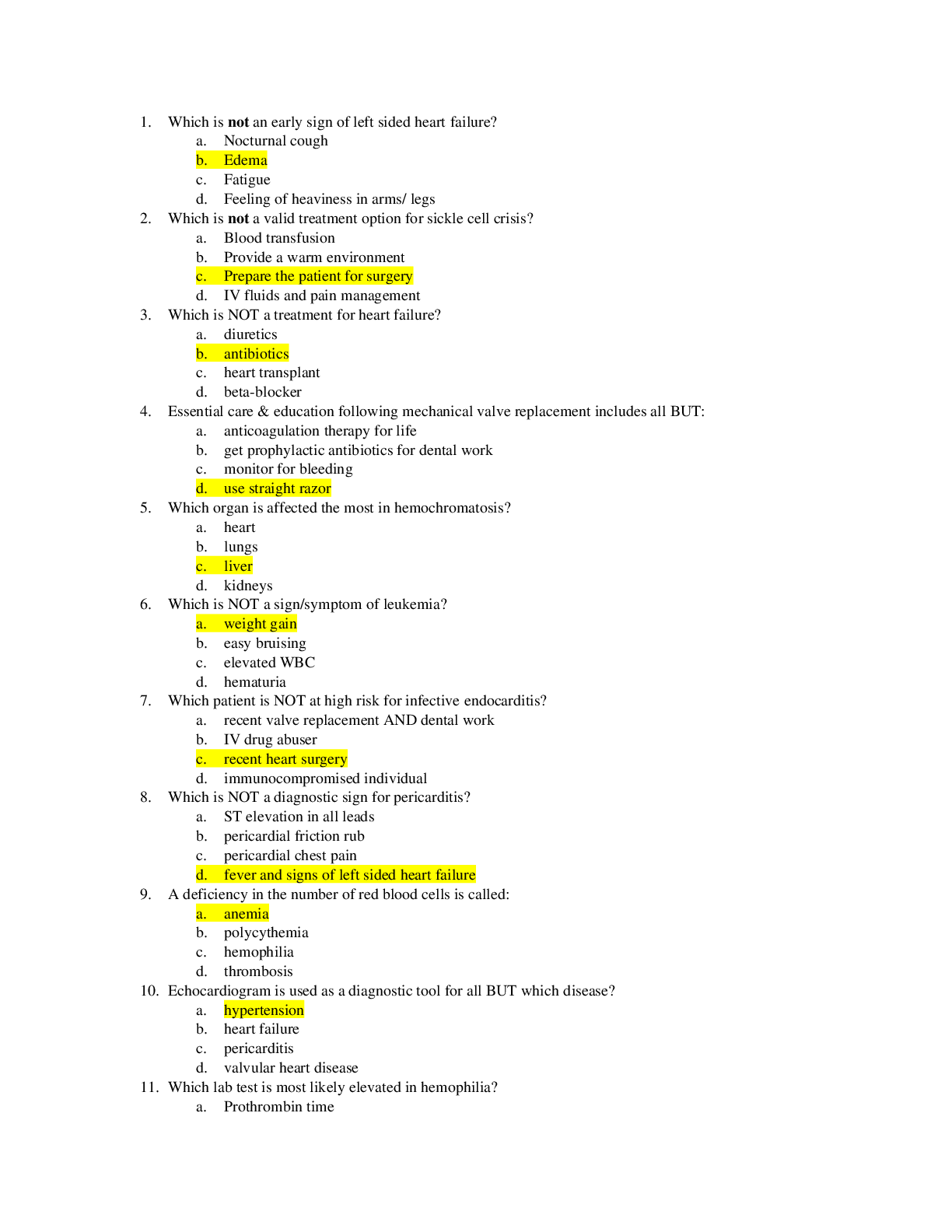
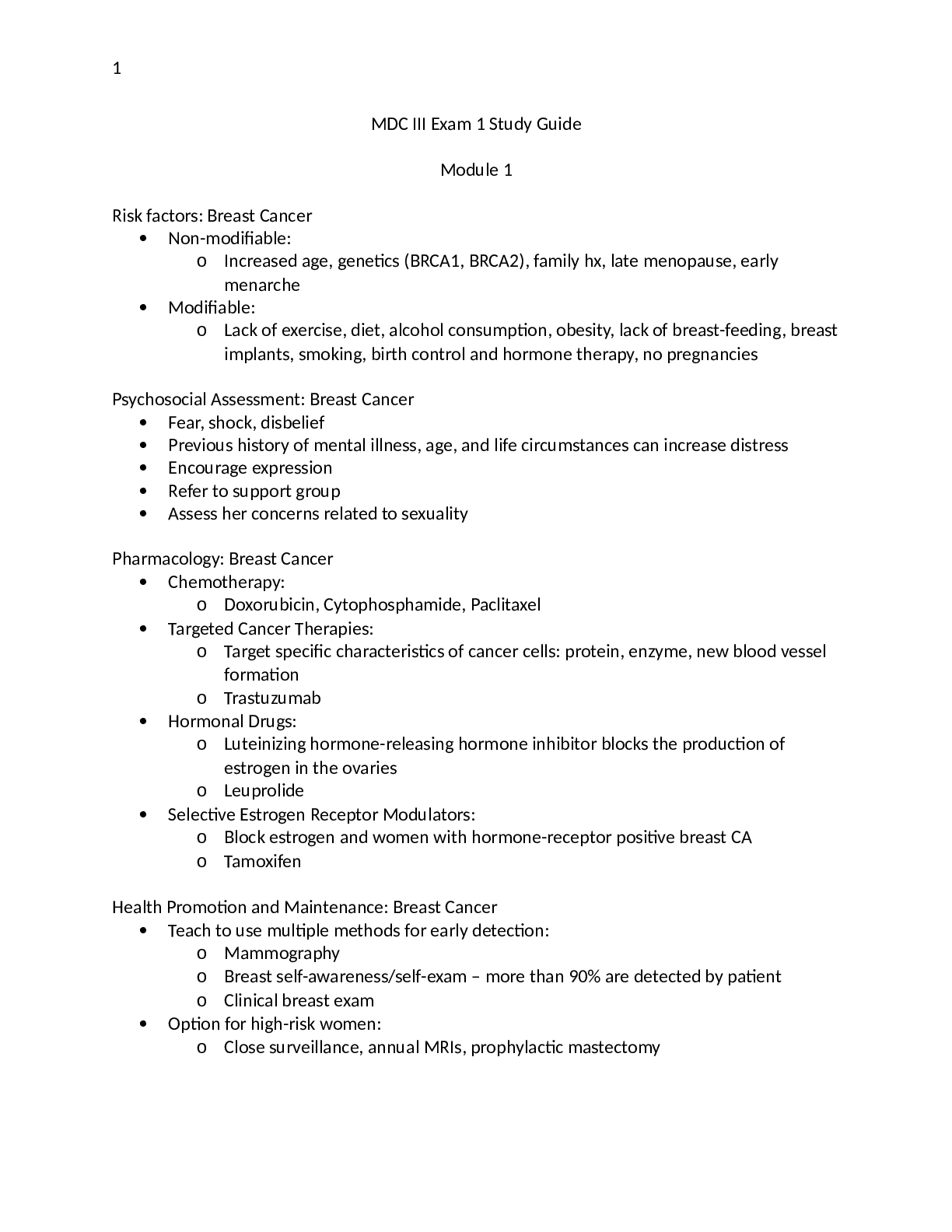



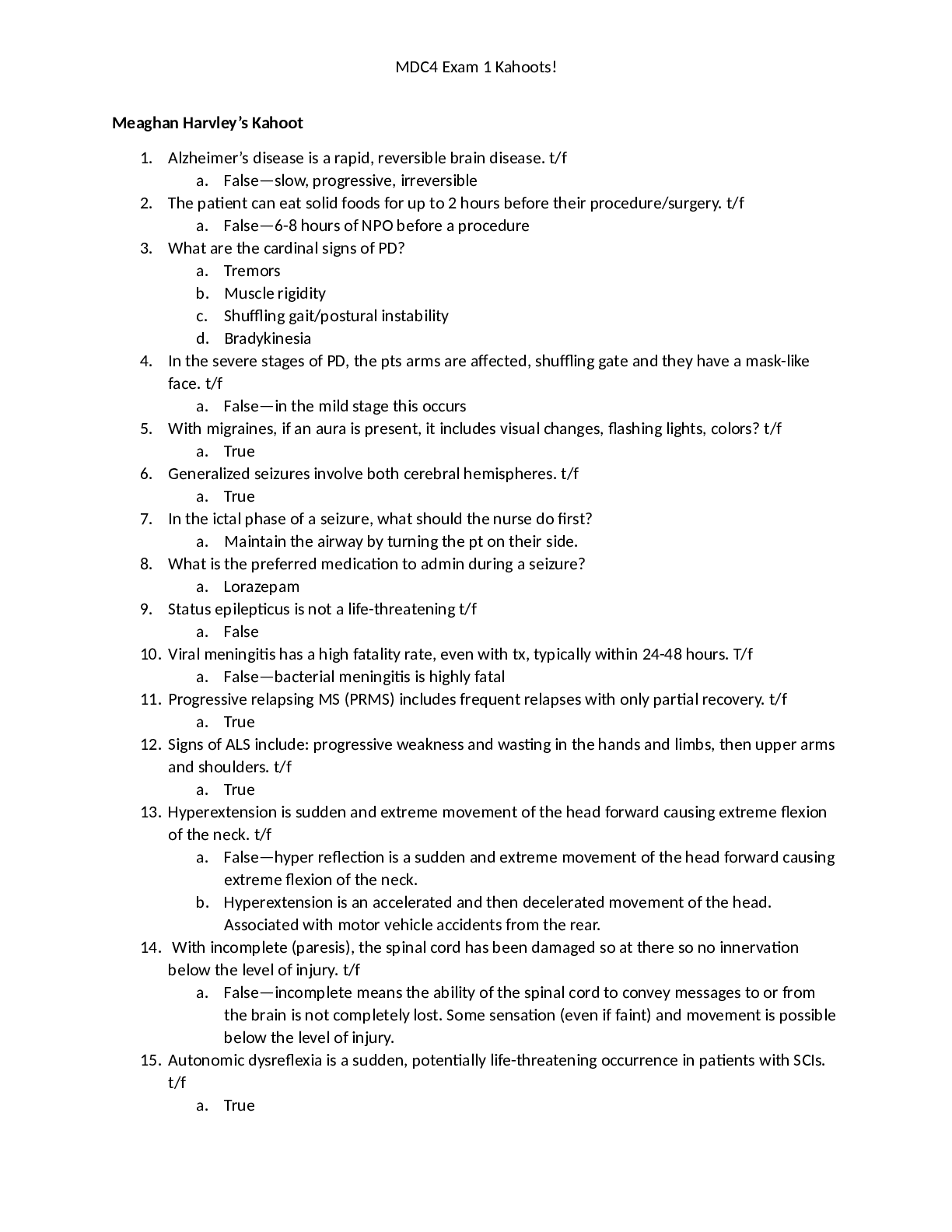
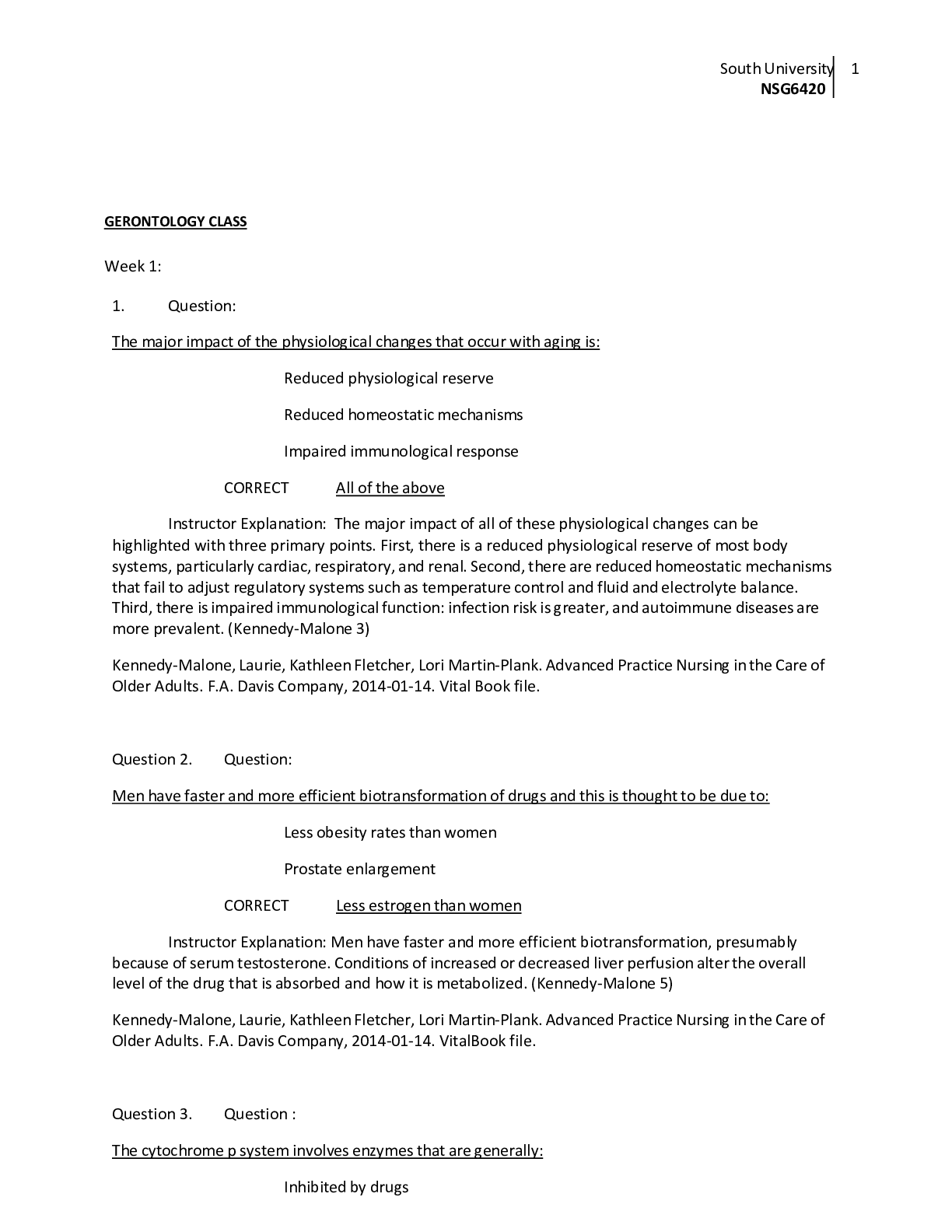
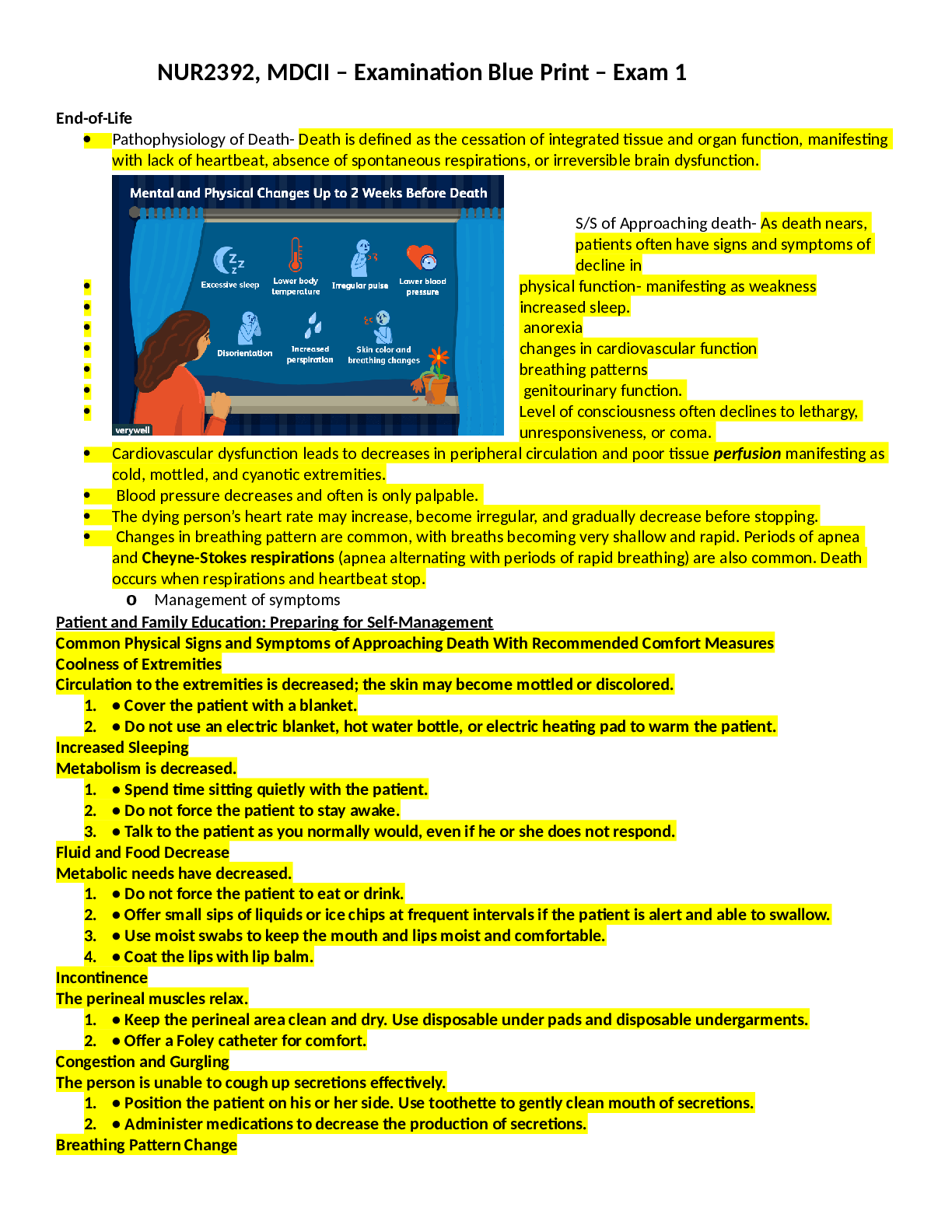


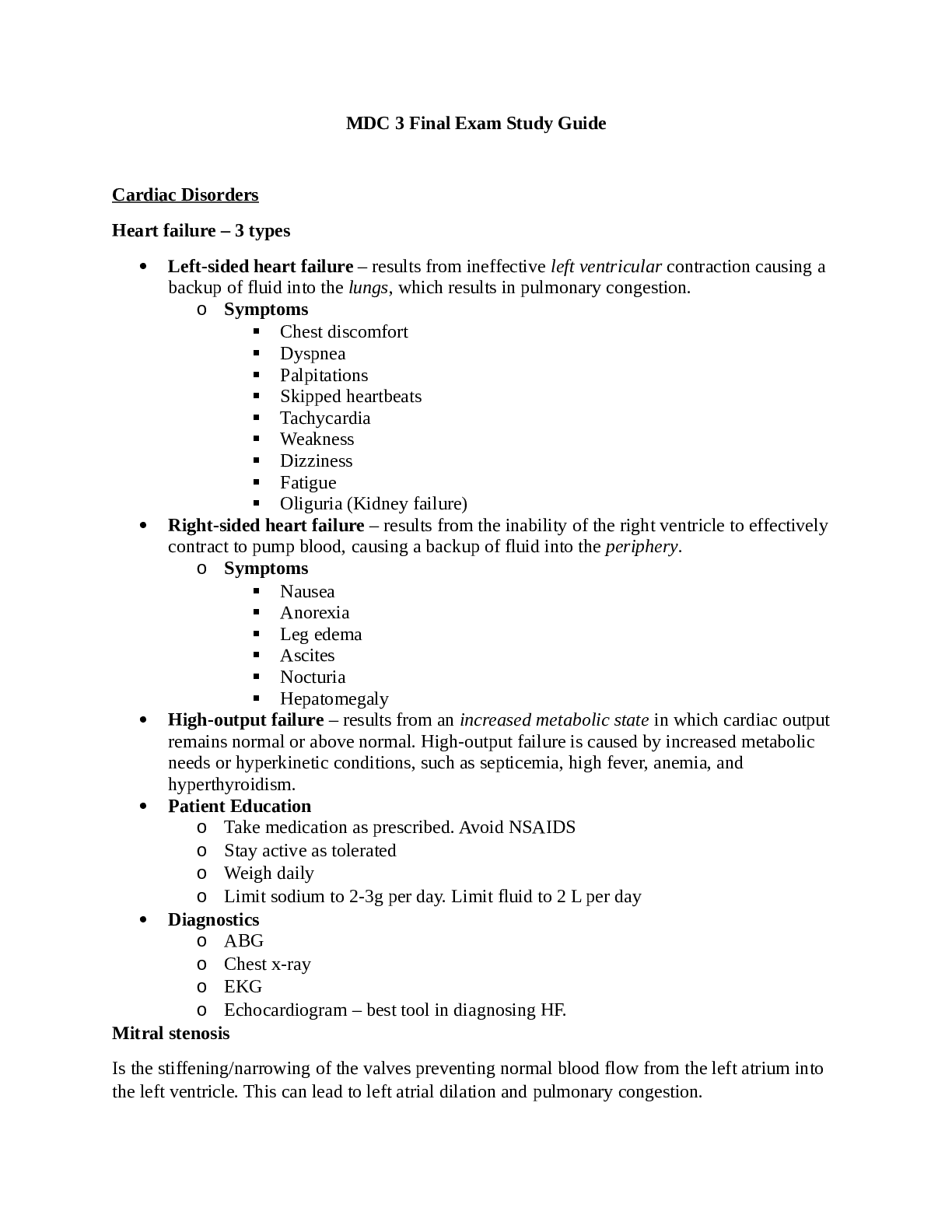
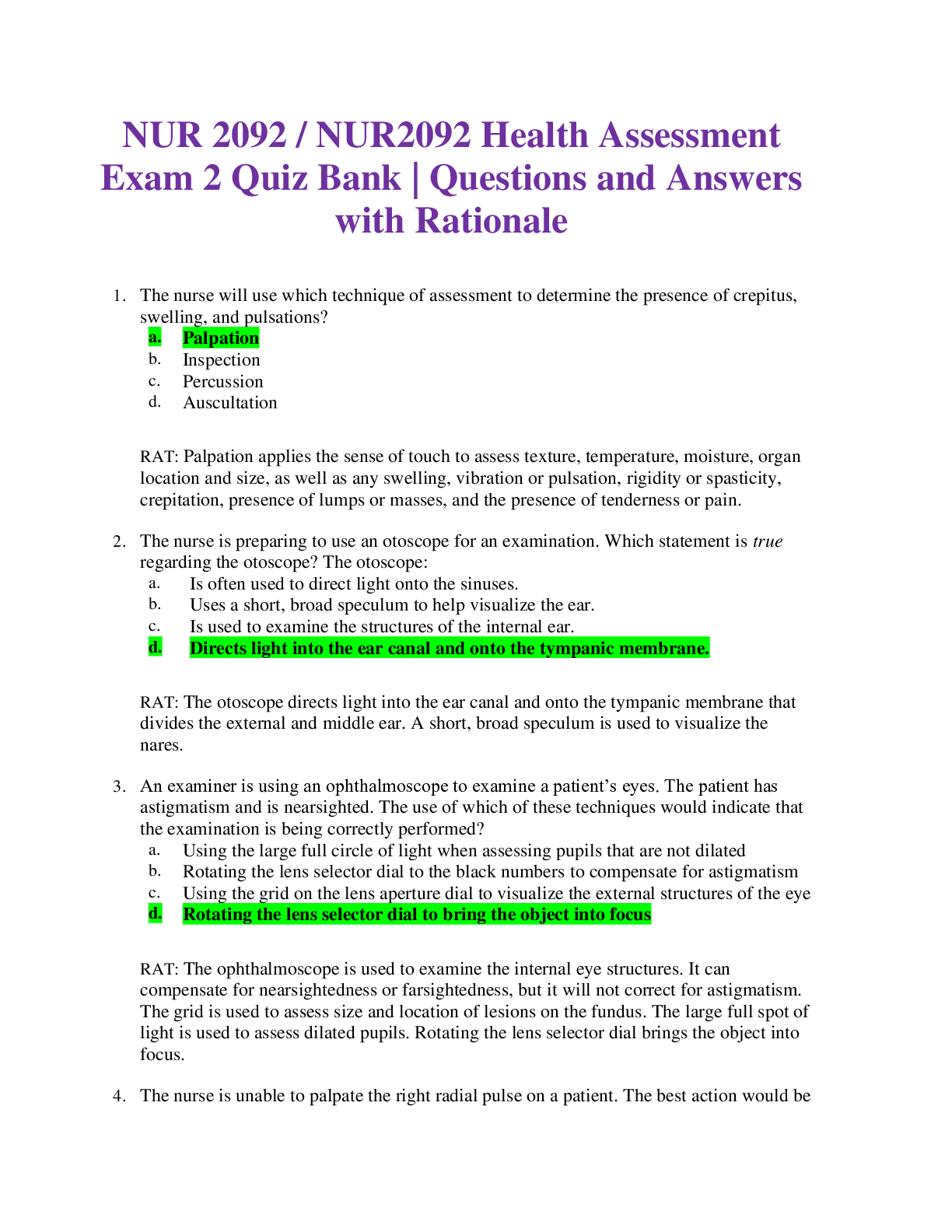
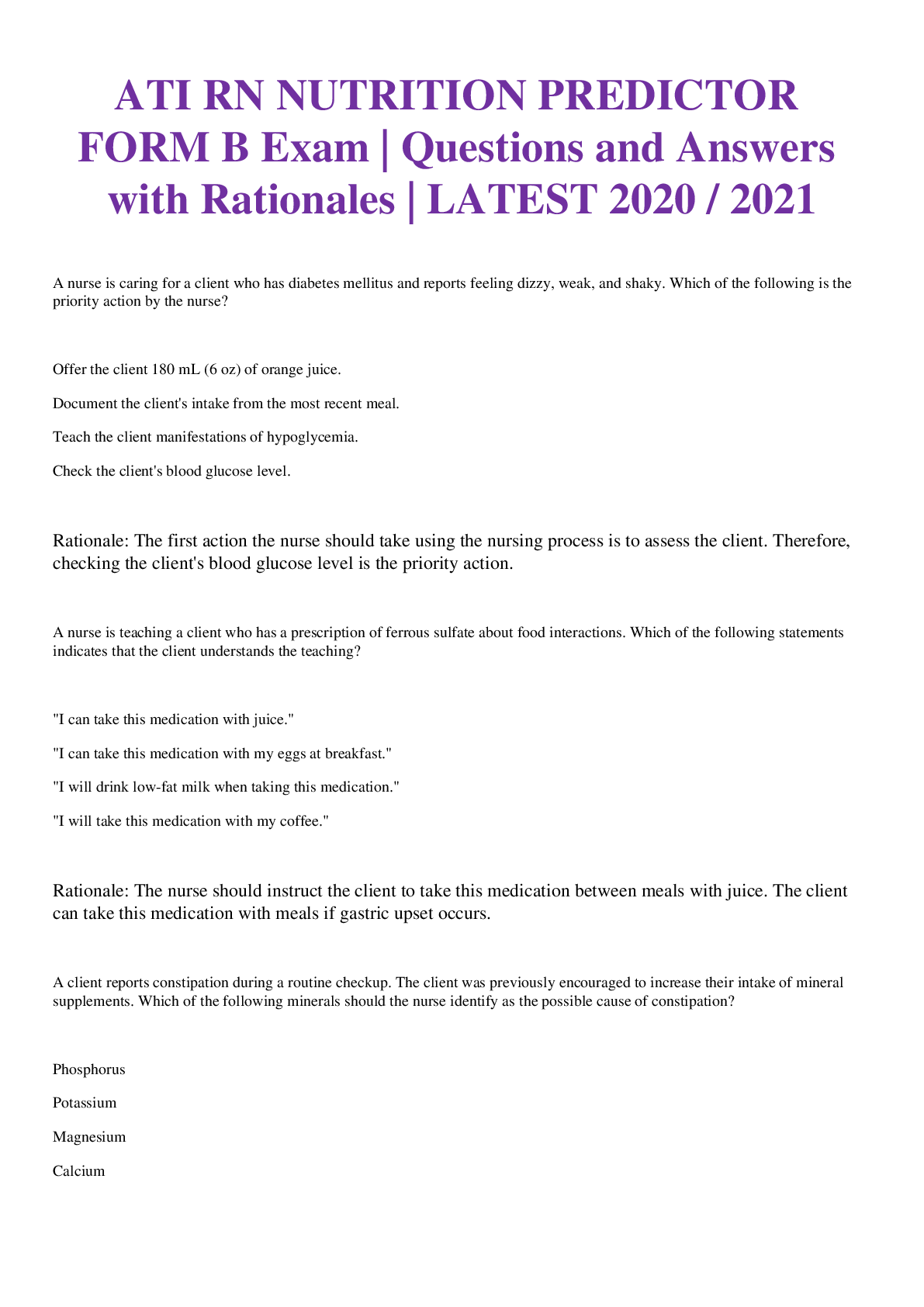
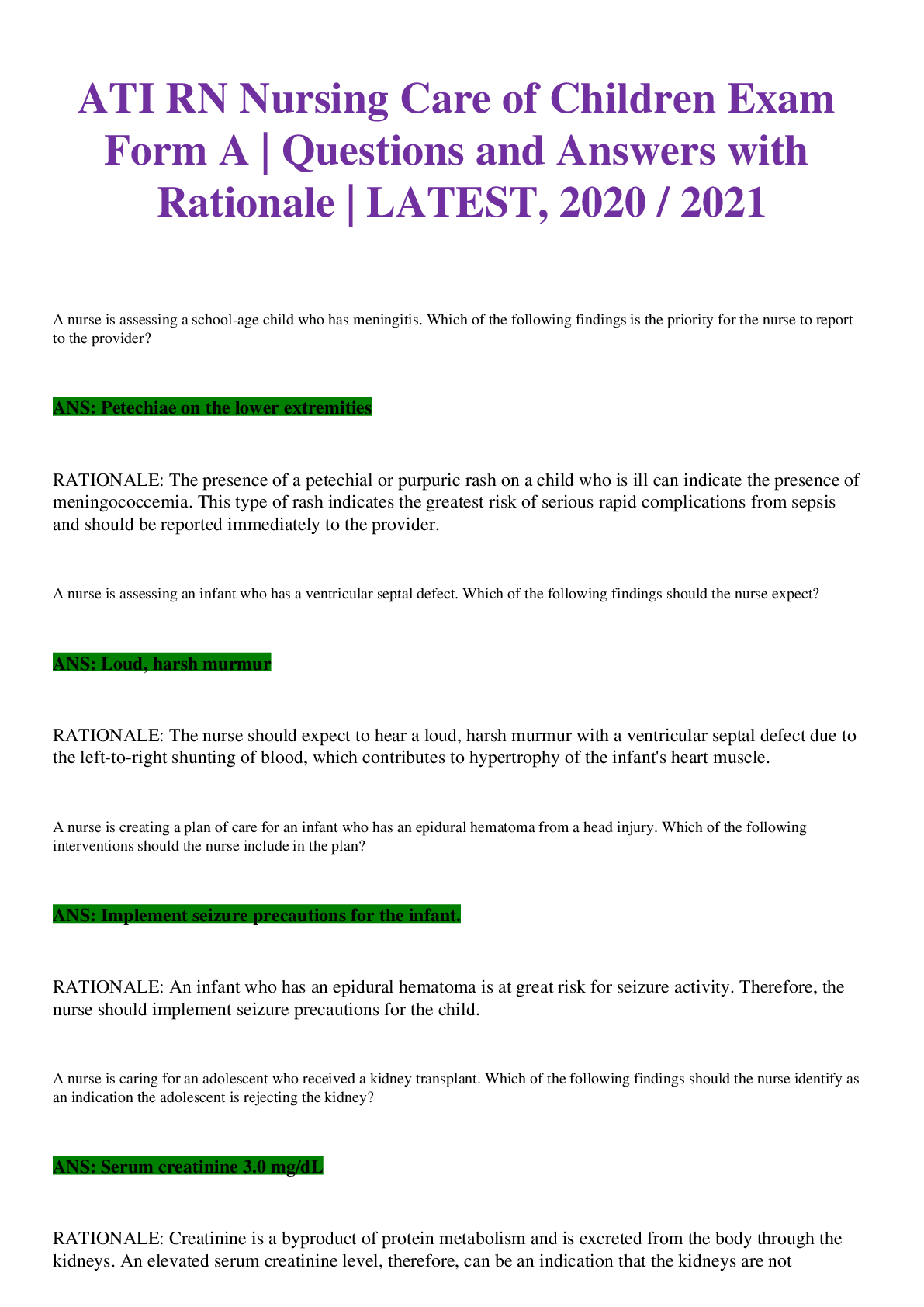
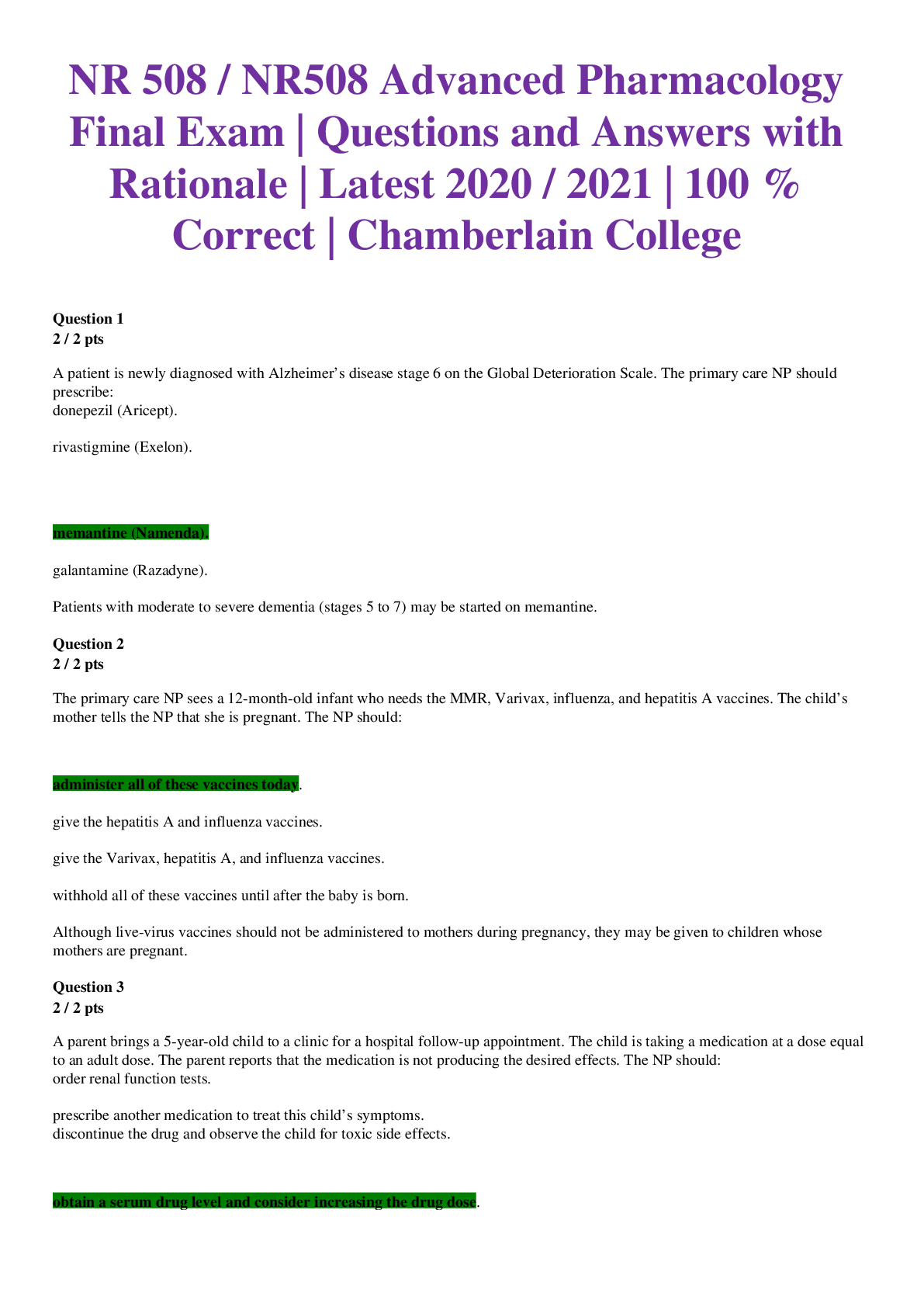
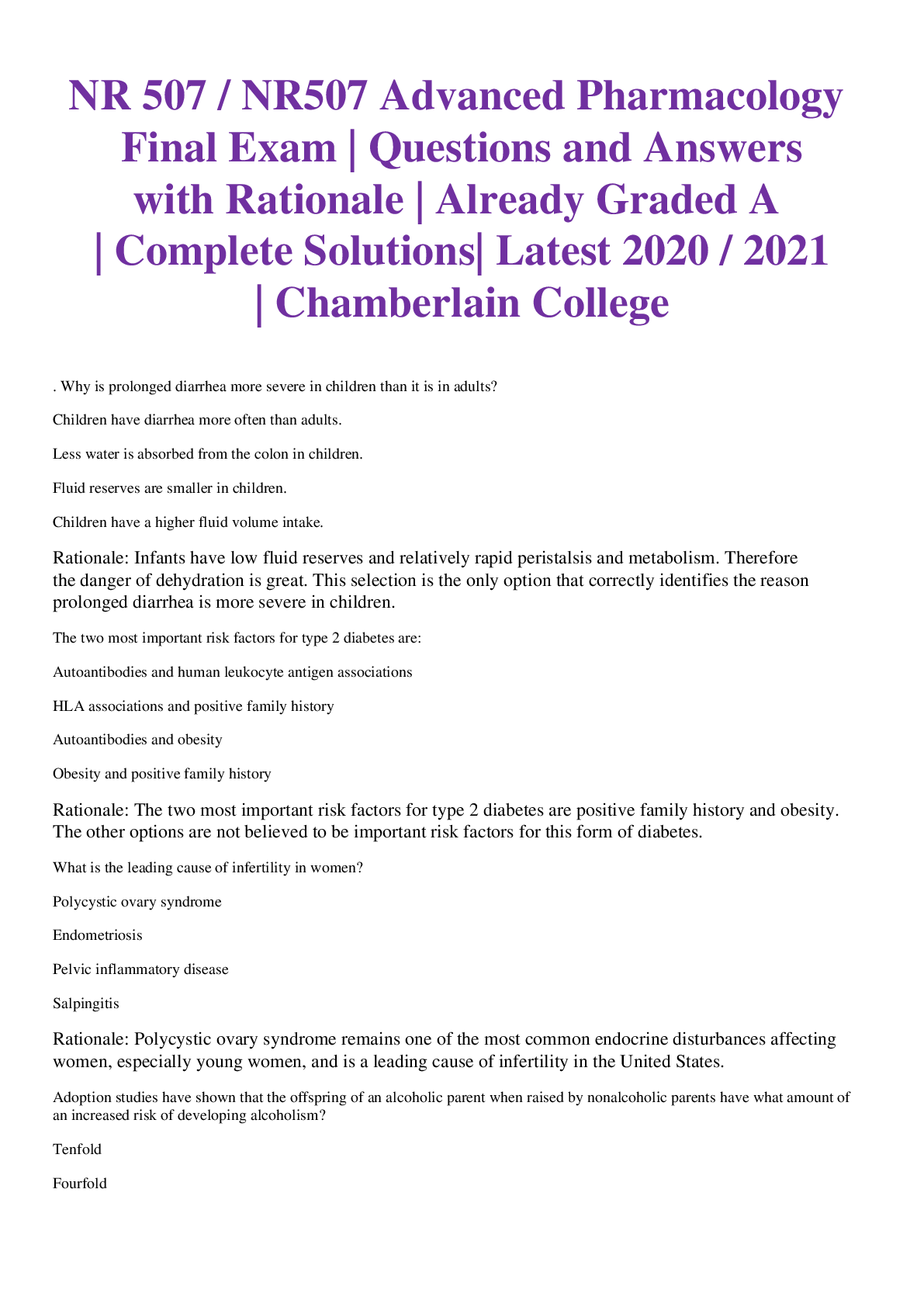
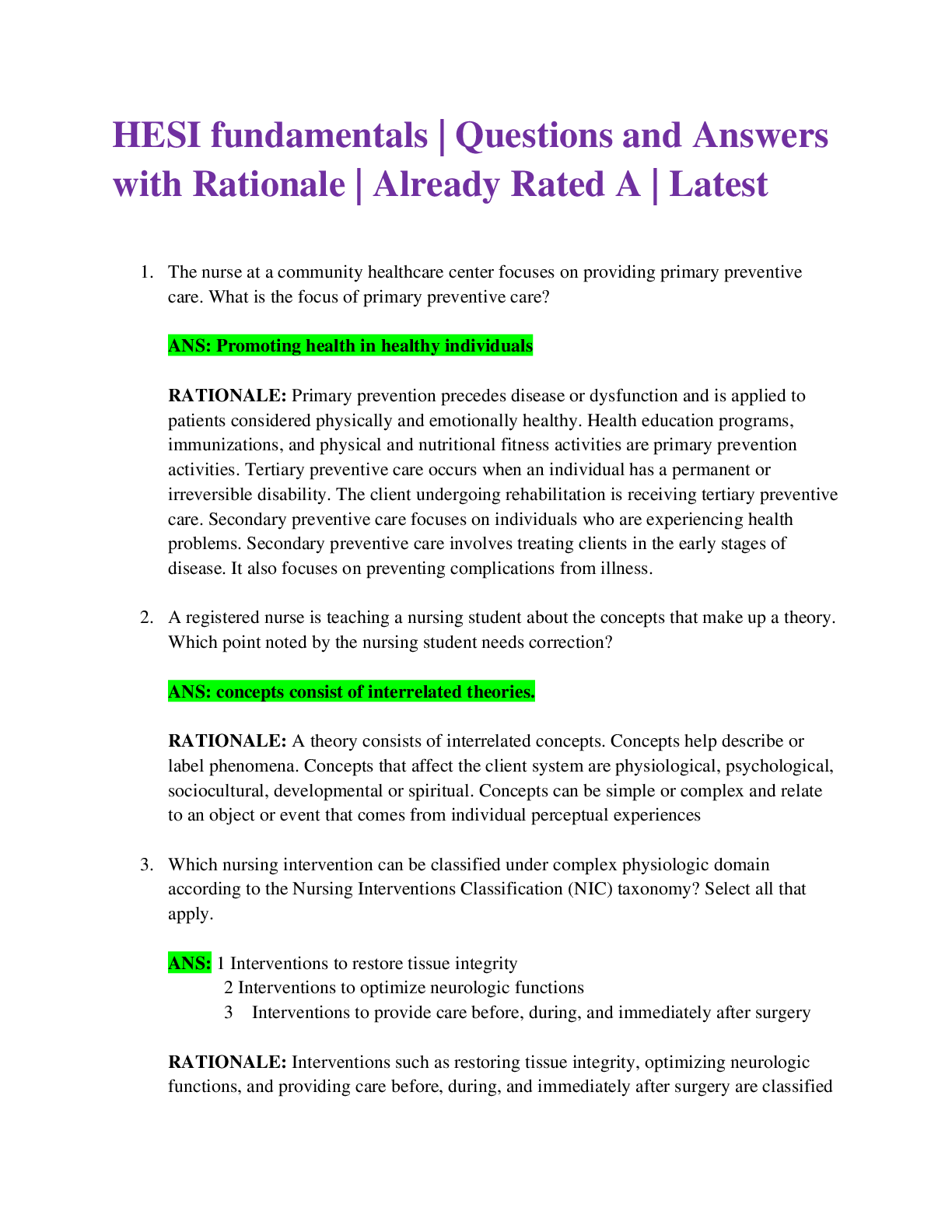
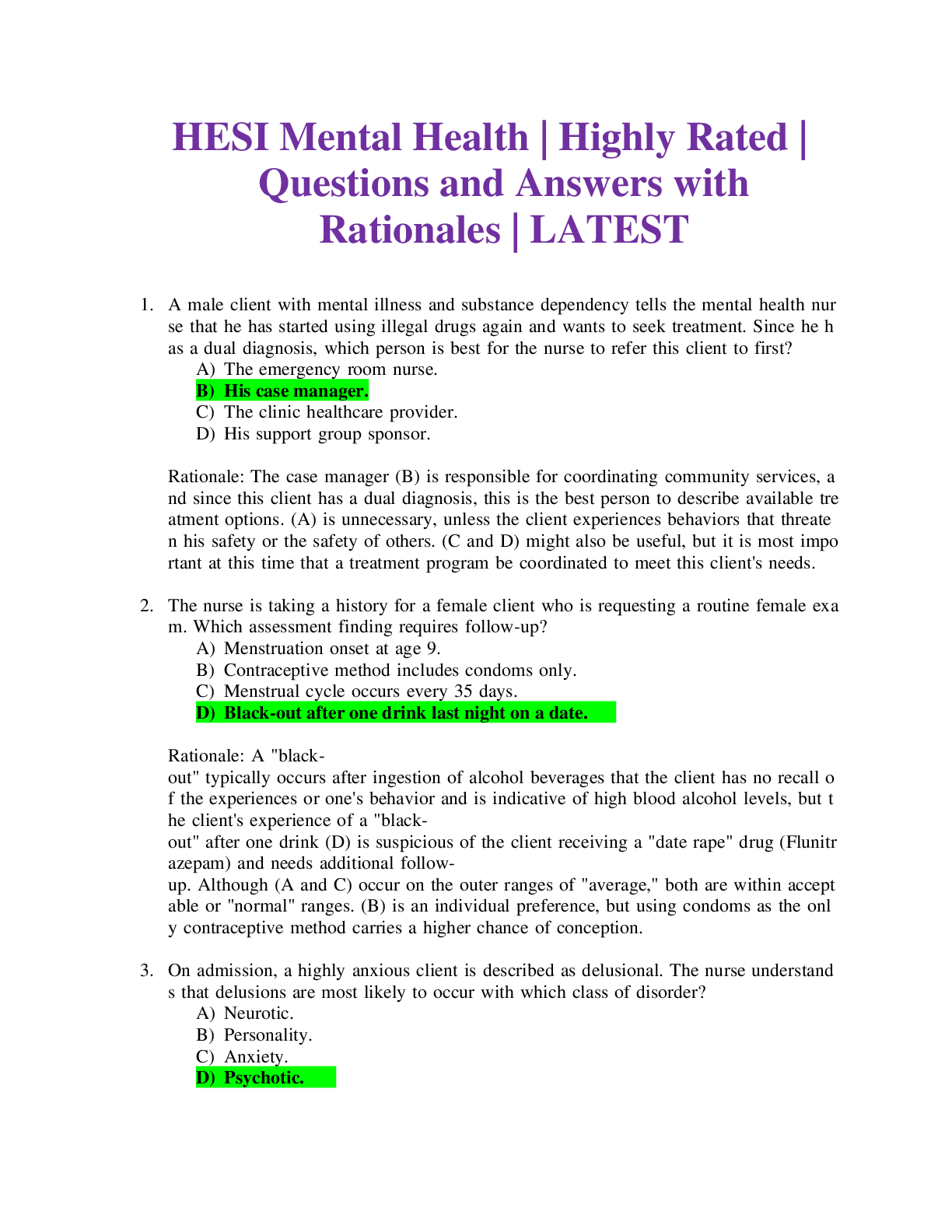
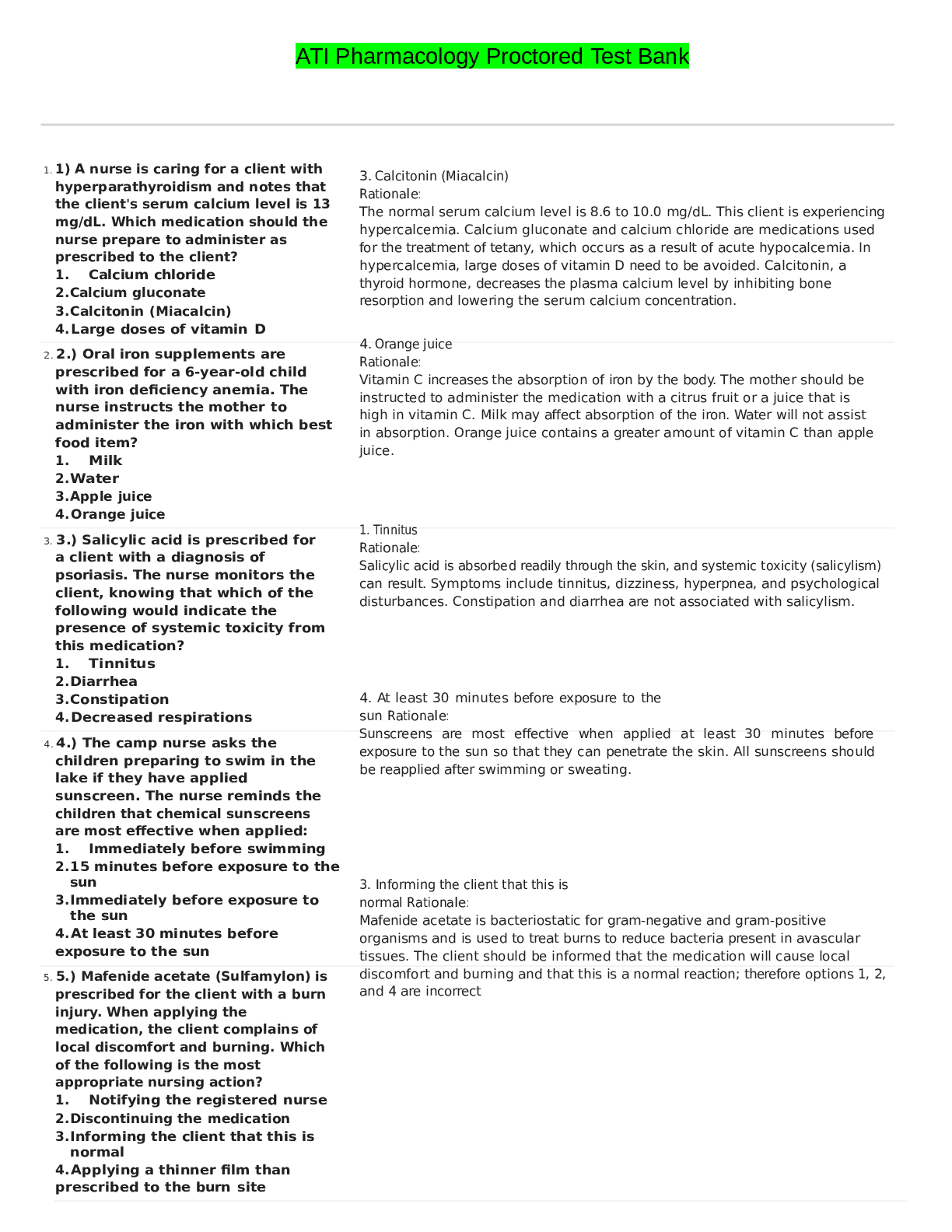


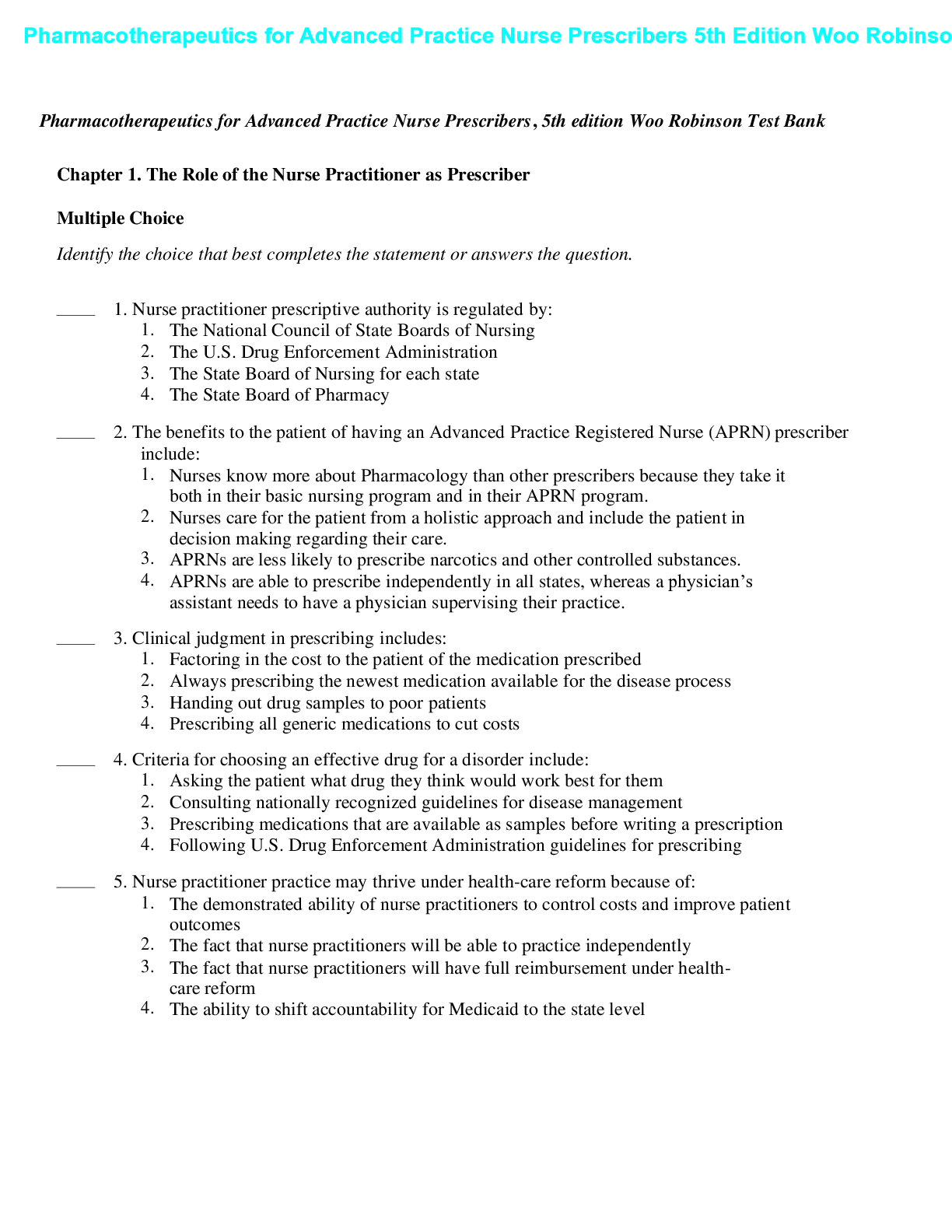
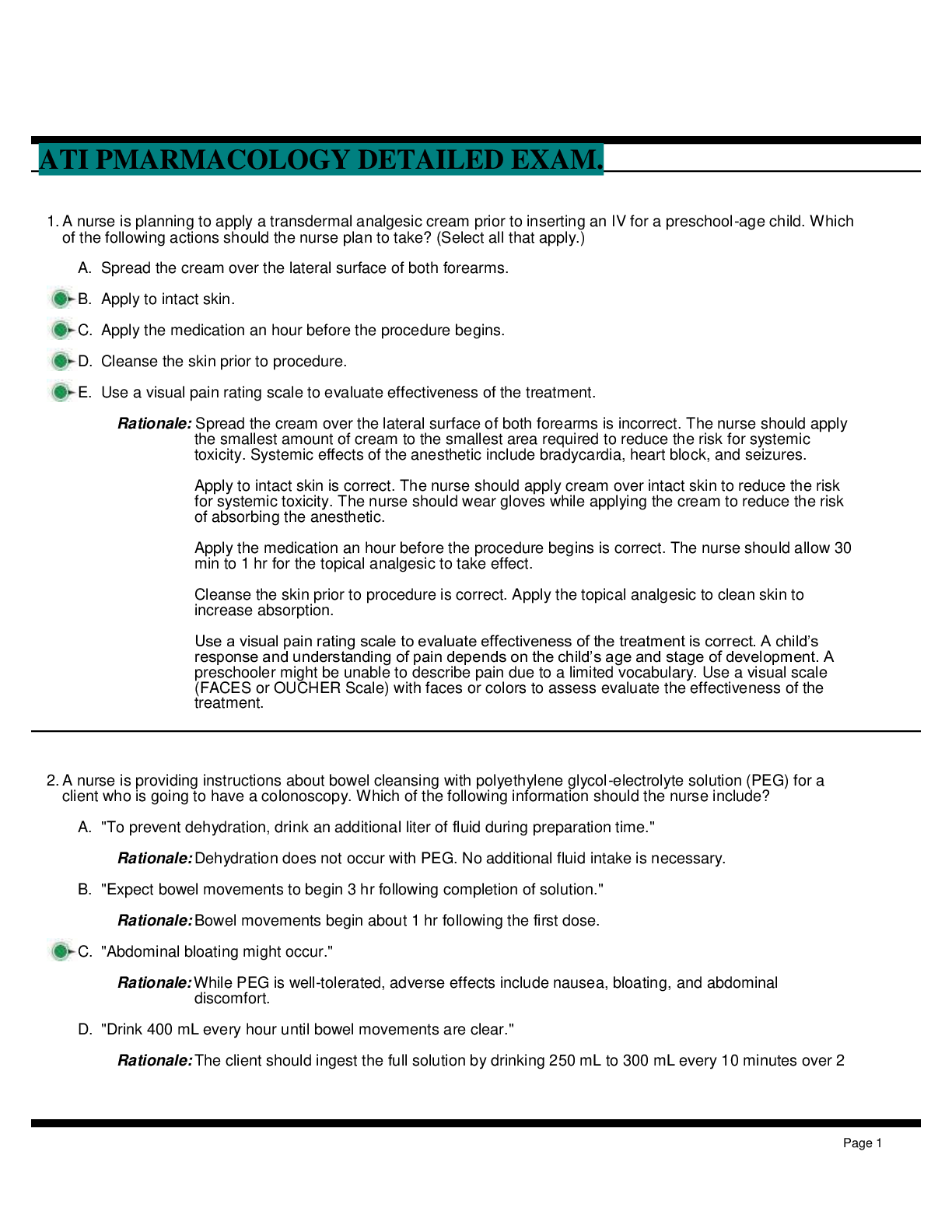

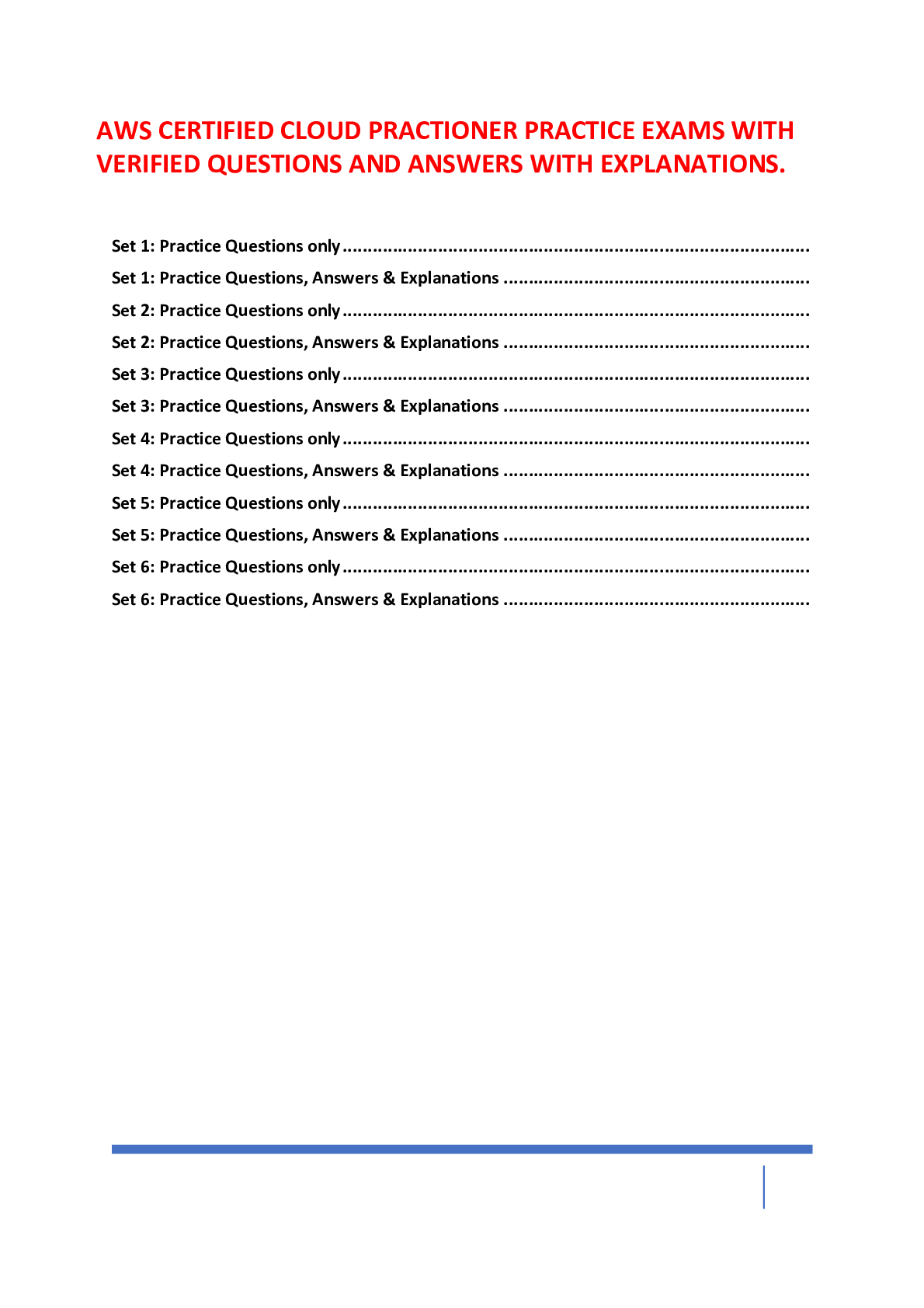

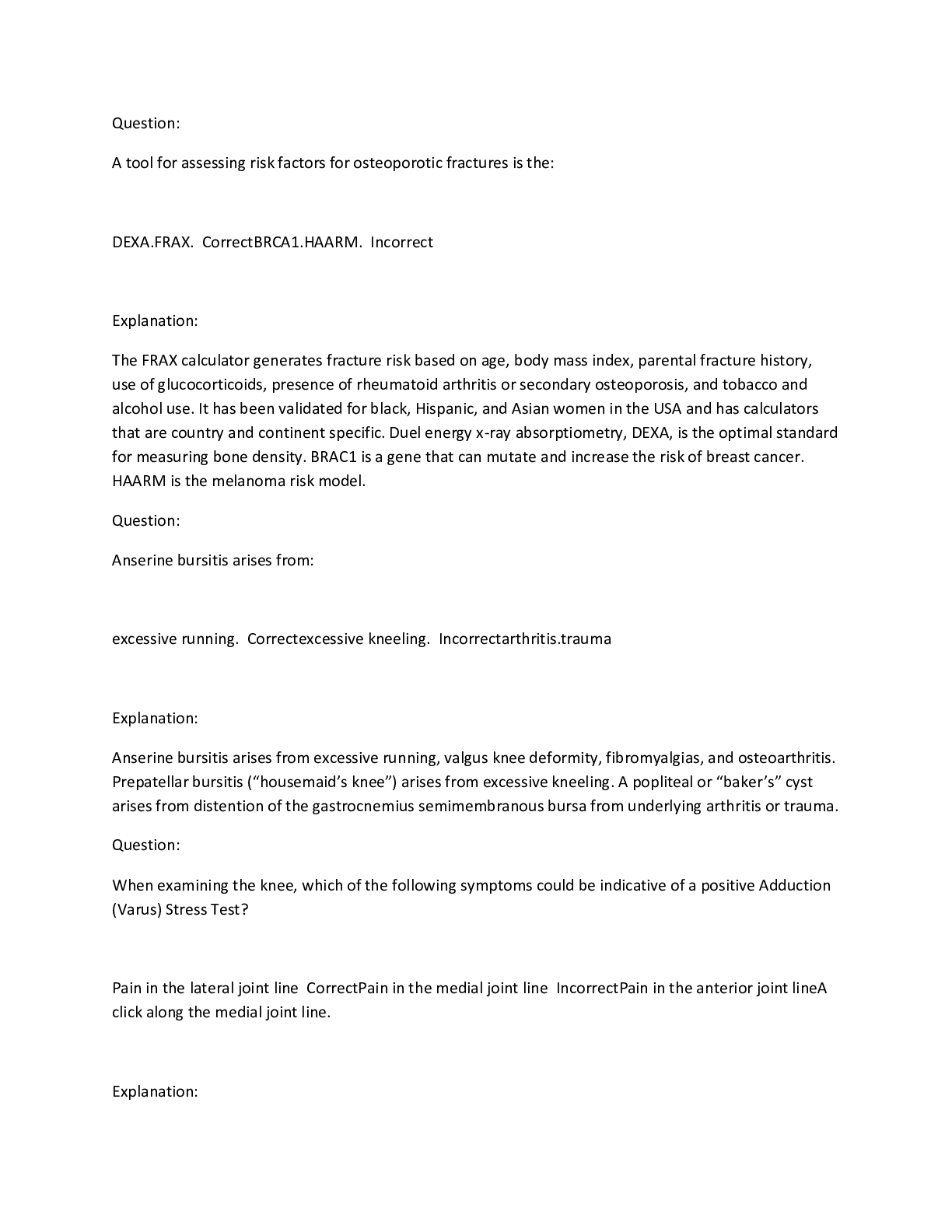
.png)
